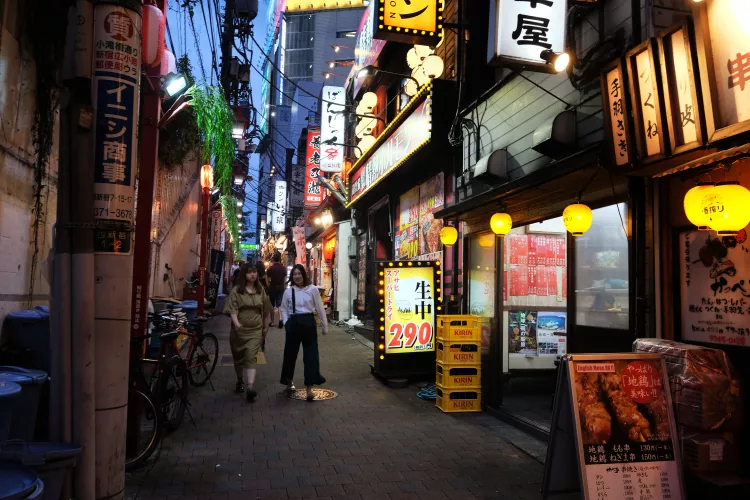1. Overview
This article explores Tokyo’s Memory Lane, also known as Omoide Yokocho, delving into its historical significance, culinary offerings, and nearby attractions. It serves as a guide for those wishing to experience this unique glimpse into Japan’s culture.
2. Understanding Honne and Tatemae
In Japan, the concepts of honne and tatemae represent the difference between one’s private self and the face shown to the world. These concepts, while not the only keys to Japanese culture, help unveil the hidden meanings behind seemingly mundane niceties.
Tokyo’s Memory Lane, or Omoide Yokocho, is a real-life manifestation of Japanese honne. Nestled behind the bright lights of Uniqlo and modern shops near Shinjuku station, this small area features narrow alleyways filled with restaurants and food stalls. The ambiance is dim, crowded, and somewhat worn, where most establishments accommodate only a handful of patrons. Here, mugs of beer and sticks of yakitori are served plainly, without the presentation typical of higher-end Japanese cuisine. Stepping into Memory Lane feels like entering a different, less polished aspect of Japanese life that remains largely hidden from view.
History
Finding Memory Lane may be a challenge, especially for first-time visitors. North of Shinjuku station’s west exit, behind a multilevel Uniqlo store, colorful banners mark the entrance. As the world’s busiest transportation hub, Shinjuku station sees over 3.64 million commuters daily, making navigation essential.
Historically, Shinjuku has been a hub of activity. In 1868, Emperor Meiji established it as a major railhead, facilitating travel to western Japan. The 1930s brought a bohemian vibe to Shinjuku, attracting artists and writers who thrived in its vibrant culture.
World War II saw significant destruction in Shinjuku, but from its ashes emerged Memory Lane as a center for black market activities. During the Occupation, this area became a critical source of food and supplies. Eventually, Memory Lane evolved into a restaurant hub characterized by a spirited ambiance that diverges from typical modern Japanese civility.
The term “Memory Lane” evokes nostalgia for the black market days. Despite Tokyo’s transformation into a contemporary metropolis, this area retains its unique, rugged charm. Often referred to humorously as Shonben Yokocho, or “Piss Alley,” the nickname highlights its past, even as modern amenities have been established. Today, Memory Lane persists amidst skyscrapers and department stores, offering a diverse range of izakaya-style food and drink.

Where to Eat and Drink
If you’re seeking upscale dining, it’s best to skip Memory Lane. The food here is straightforward and budget-friendly, catering primarily to local salarymen unwinding after work. While the list of restaurants and stalls can be viewed on Memory Lane’s English website, it’s wise to understand that most establishments serve small plates, encouraging patrons to order multiple dishes and drinks.
Yakitori reigns supreme here, with over 16 stalls grilling various chicken parts to perfection. Business professionals fill the smoky interiors, enjoying beers alongside their meals.
Moreover, Memory Lane is well-known for motsu-yaki, or grilled entrails. In the post-war era, resourceful Tokyoites started businesses selling unregulated animal innards. Some stalls continue to serve grilled intestines, kidneys, and more to adventurous customers. For over 40 years, restaurant Asadachi has gained attention for its unusual offerings, including skewered salamander, turtle hotpot, and even liquor fermented with whole snakes.
Things to Do Nearby
Memory Lane serves as an excellent starting point for exploring Shinjuku’s other notable neighborhoods: Kabuki-cho, known for its entertainment offerings; Golden Gai, featuring small, cozy bars; and Ni-chome, the heart of Japan’s LGBTQ+ culture. Although many stalls open around 4 p.m., the atmosphere becomes most enchanting in the evening as paper lanterns illuminate the alleyways.
Each shop within Memory Lane holds its own unique charm, representing distinctive cracks within Tokyo’s sanitized facade, embodying the essence of tatemae.





